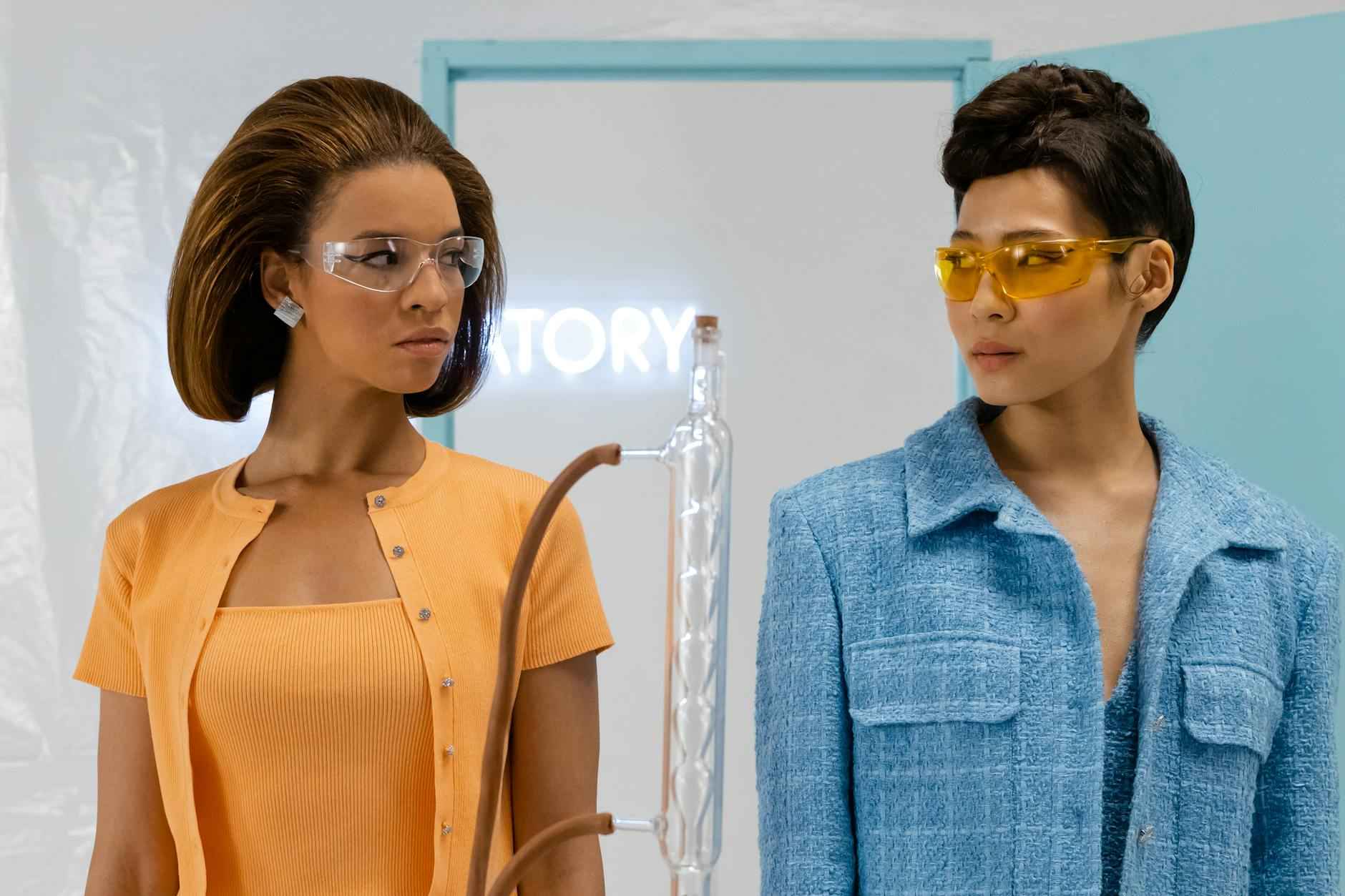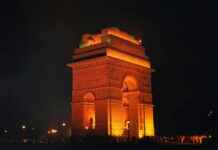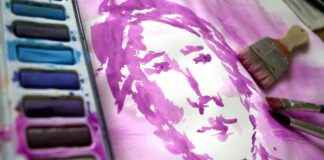This article delves into the vibrant intersection of New York City and Indian fashion, examining how cultural influences shape trends, create unique styles, and foster a dynamic fashion scene. The fusion of these two distinct cultures has led to an exciting evolution in fashion, with designers and consumers alike embracing a blend of traditional and contemporary aesthetics.
Understanding Cultural Fusion in Fashion
Cultural fusion in fashion refers to the blending of different cultural elements into new styles. In New York City, this phenomenon is particularly pronounced, as the city serves as a melting pot for diverse cultures. Designers often draw inspiration from various traditions, creating innovative pieces that resonate with a global audience. This blending not only enhances creativity but also broadens the market appeal, allowing for a unique fusion aesthetic that reflects the city’s multicultural identity.
In recent years, the influence of Indian fashion has become increasingly evident in New York’s style landscape. Designers are incorporating traditional Indian techniques, fabrics, and motifs into their collections, resulting in garments that are both modern and steeped in cultural significance. This creative exchange fosters a dynamic fashion scene where cultural narratives are interwoven into the fabric of everyday life.
The Impact of Indian Fashion on New York Style
Indian fashion has significantly influenced New York’s style landscape, with its vibrant colors, intricate patterns, and luxurious fabrics making a notable mark. Key trends emerging from this influence include the incorporation of traditional textiles, such as silk and cotton, into contemporary designs. Designers are creatively blending these materials with modern silhouettes, resulting in unique pieces that appeal to a diverse audience.
Moreover, the popularity of embroidered fabrics, a hallmark of Indian fashion, has surged in New York. These fabrics add texture and visual interest to modern outfits, making them a favorite among fashion-forward individuals. As a result, we see a growing trend of incorporating intricate embroidery into everyday wear, from casual blouses to high-end evening gowns.
Fusion Fashion Events in New York City
New York City hosts numerous events that celebrate cultural fusion in fashion, providing a platform for Indian designers to showcase their unique contributions. Fashion shows featuring Indian designers have become increasingly popular, highlighting the creativity and craftsmanship inherent in Indian fashion. These events not only promote individual talents but also foster a sense of community among designers and consumers.
In addition to fashion shows, pop-up shops and cultural markets are gaining traction in New York. These venues offer a space for Indian fashion to thrive, allowing designers to connect with consumers directly. They serve as a hub for cultural exchange, where individuals can explore the rich heritage of Indian fashion while engaging with contemporary interpretations.
The Role of Social Media in Cultural Fusion
Social media plays a crucial role in promoting cultural fusion in fashion, particularly in a city as vibrant as New York. Platforms like Instagram and TikTok have become essential tools for designers and influencers to showcase their work, reach wider audiences, and influence trends. Influencers are key players in bridging cultural gaps, often promoting Indian fashion to a diverse demographic in New York.
Hashtags related to Indian fashion, such as #DesiStyle and #FusionFashion, have gained popularity, making it easier for consumers to discover new trends and styles. These hashtags help shape conversations around cultural fusion, encouraging dialogue about the significance of blending traditions in contemporary fashion.
Future Trends in Cultural Fusion Fashion
As fashion continues to evolve, cultural fusion will play a significant role in shaping future trends. Emerging designers are at the forefront of this movement, bringing fresh perspectives and innovative designs that challenge traditional norms. By identifying these talents, we can gain insights into the future of fashion and how cultural fusion will continue to influence the industry.
Looking ahead, predictions suggest that sustainability and inclusivity will become central themes in the fusion fashion landscape. Designers will increasingly focus on ethical practices, incorporating sustainable materials and production methods while celebrating diverse cultural narratives. This evolution promises to enrich the fashion industry, making it more accessible and representative of a global audience.

Understanding Cultural Fusion in Fashion
Cultural fusion in fashion is a captivating phenomenon that transcends borders, creating a vibrant tapestry of styles that reflect the interconnectedness of our global society. In the heart of New York City, this fusion is particularly evident, as diverse cultural influences converge to shape trends and redefine aesthetics. This article delves into the essence of cultural fusion in fashion, exploring its significance and manifestations within the bustling fashion industry of NYC.
Cultural fusion in fashion refers to the melding of various cultural elements into innovative and unique styles. This blending often results in fresh perspectives that celebrate diversity while also challenging traditional norms. In New York City, a melting pot of cultures, this phenomenon is not just a trend; it is a lifestyle that influences how individuals express themselves through clothing.
The fashion industry in NYC serves as a canvas for designers who draw inspiration from their heritage, combining traditional motifs with contemporary designs. This artistic collaboration not only enriches the fashion landscape but also fosters a deeper understanding of different cultures. For instance, designers might incorporate Indian textiles into modern silhouettes, resulting in garments that resonate with both cultural significance and modern appeal.
One of the most notable aspects of cultural fusion is how it promotes inclusivity. By embracing various cultural aesthetics, fashion becomes a universal language that allows individuals to connect, share stories, and celebrate their identities. In New York, this is particularly evident during fashion weeks and cultural festivals, where designers showcase collections that reflect their diverse backgrounds.
Furthermore, cultural fusion in fashion is not limited to high-end designers; it permeates street style, where everyday individuals mix and match pieces from different cultures. This democratization of fashion encourages creativity and self-expression, allowing people to curate their unique styles that tell their personal stories.
In addition to its aesthetic appeal, cultural fusion in fashion also raises important questions about authenticity and appropriation. As designers borrow elements from various cultures, it is crucial to approach this practice with respect and understanding. Engaging with cultural narratives and acknowledging their origins can lead to a more meaningful and respectful fusion.
In conclusion, cultural fusion in fashion is a dynamic and evolving concept that reflects the rich tapestry of human experience. In New York City, this blending of cultures not only shapes trends but also fosters connections among individuals from diverse backgrounds. As we continue to explore this fascinating intersection, it is essential to celebrate the beauty of diversity while remaining mindful of the cultural significance behind the styles we embrace.

The Impact of Indian Fashion on New York Style
Cultural Fusion: When New York City Meets Indian FashionThe world of fashion is an ever-evolving tapestry, woven from the threads of diverse cultures and influences. Among these, the impact of Indian fashion on New York’s style landscape has been profound and transformative. This section delves into the intricate ways Indian designers and their unique aesthetics are reshaping the fashion scene in one of the world’s most iconic cities. From traditional textiles to the bold influence of Bollywood, the fusion of Indian and American styles is a vibrant testament to cultural exchange.
Indian fashion has made significant strides in New York, introducing a wealth of vibrant colors, intricate patterns, and unique craftsmanship that have captivated the fashion-forward crowd. The influence is evident in various aspects of style, from streetwear to high-end couture, demonstrating a rich blend of traditional and contemporary elements.
- Traditional Textiles in Modern Fashion: The use of traditional Indian textiles, such as silk, cotton, and khadi, has gained traction among New York designers. These materials not only add a unique texture and aesthetic but also carry cultural significance that resonates with consumers seeking authenticity.
- Bollywood’s Influence on Fashion Trends: The glamour and drama of Bollywood have seeped into the New York fashion scene, inspiring designers to incorporate elements such as vibrant colors, sequins, and elaborate embroidery. This influence is particularly evident in evening wear and festive collections.
- Embroidered Fabrics and Their Popularity: Embroidery, a hallmark of Indian craftsmanship, has found a place in modern outfits, appealing to New York’s trendsetters. Designers are reinterpreting traditional techniques to create contemporary pieces that resonate with a global audience.
- Fusion of Styles: Collaborations between Indian and American designers have led to innovative collections that blend Eastern and Western aesthetics. This fusion not only broadens the appeal of Indian fashion but also creates new trends that reflect the multicultural landscape of New York.
As Indian designers continue to make their mark, their contributions are fostering a deeper appreciation for cultural diversity within the fashion industry. Events such as fashion weeks and cultural festivals in New York serve as platforms for showcasing this fusion, allowing designers to reach a broader audience.
The integration of Indian fashion into New York’s style is not merely about aesthetics; it also represents a shift in consumer preferences towards more inclusive and diverse fashion narratives. Shoppers are increasingly drawn to brands that celebrate cultural heritage and craftsmanship, leading to a growing demand for unique, artisanal pieces.
In conclusion, the impact of Indian fashion on New York’s style landscape is multifaceted and dynamic. By embracing traditional elements and reinterpreting them for modern sensibilities, Indian designers are not just influencing trends but also reshaping the very fabric of American fashion. This cultural exchange enriches both communities and sets the stage for future collaborations that will continue to push the boundaries of style.
Traditional Indian Textiles in Modern Designs
In the vibrant world of fashion, the fusion of traditional and contemporary styles has become a hallmark of creativity and innovation. One of the most compelling aspects of this fusion is the integration of traditional Indian textiles such as silk and cotton into modern designs. This practice not only preserves cultural heritage but also enhances the aesthetic appeal of contemporary fashion, making it a significant trend in the industry today.
Traditional Indian textiles like silk and cotton have a rich history that dates back centuries. These materials are renowned for their quality, intricate craftsmanship, and vibrant colors. Their incorporation into modern designs represents a unique fusion aesthetic that attracts designers and consumers alike. This section delves into the importance of these textiles in contemporary fashion and how they contribute to a distinctive style.
Silk, often referred to as the “queen of fabrics,” is celebrated for its luxurious feel and natural sheen. It has been a staple in Indian fashion, used in everything from traditional sarees to modern evening gowns. The versatility of silk allows designers to experiment with various silhouettes and styles. For instance, many contemporary designers are now creating fusion wear that combines traditional Indian silhouettes with modern cuts, making silk garments suitable for a variety of occasions, from casual outings to formal events.
Cotton, on the other hand, is cherished for its comfort and breathability, making it an ideal choice for everyday wear. It is often used in ethnic wear such as kurtas and lehengas, which are being reimagined by modern designers to cater to a global audience. The use of cotton in contemporary designs not only emphasizes sustainability but also appeals to a fashion-conscious demographic that values both style and comfort.
Moreover, the integration of traditional textiles into modern designs allows for a celebration of cultural identity. Designers are increasingly drawing inspiration from Indian heritage, creating pieces that tell a story while also being fashionable. This cultural narrative resonates with consumers who seek authenticity and uniqueness in their clothing choices.
- Global Appeal: The fusion of traditional textiles with modern designs has a global appeal, attracting international markets and promoting cultural exchange.
- Innovation in Techniques: Many designers are adopting innovative techniques to incorporate these textiles, such as digital printing and sustainable practices, which enhance their aesthetic value.
- Artisan Collaboration: Collaborations with local artisans further enrich the designs, ensuring that traditional craftsmanship is preserved while being adapted for contemporary tastes.
In conclusion, the incorporation of traditional Indian textiles like silk and cotton into modern designs plays a crucial role in shaping a unique fusion aesthetic. This trend not only highlights the beauty of Indian craftsmanship but also fosters a deeper appreciation for cultural heritage within the global fashion landscape. As designers continue to explore this fusion, we can expect to see even more innovative and exciting creations that celebrate both tradition and modernity.
Embroidered Fabrics and Their Popularity
In the vibrant world of fashion, embroidered fabrics stand out as a significant element of Indian heritage, now seamlessly integrated into contemporary styles. The intricate artistry involved in embroidery not only enhances the aesthetic appeal of garments but also tells a story of cultural richness and tradition. As the global fashion landscape evolves, New York City has become a melting pot where these embroidered textiles find a new home, captivating the attention of fashion enthusiasts and influencers alike.
Embroidered fabrics, characterized by their detailed stitching and vibrant designs, are often crafted using traditional techniques that have been passed down through generations. These fabrics can range from luxurious silks adorned with ornate patterns to lightweight cottons featuring whimsical motifs. The versatility of embroidered textiles allows for their application in various modern outfits, from casual wear to haute couture, making them a favorite among designers in New York.
One of the primary reasons for the growing popularity of embroidered fabrics in New York is their unique ability to blend with various fashion styles. Designers are increasingly incorporating these textiles into their collections, creating a fusion of traditional Indian aesthetics with modern silhouettes. For instance, an embroidered jacket can be paired with a simple white tee and jeans, instantly elevating the outfit and adding a touch of elegance. This adaptability makes embroidered fabrics appealing not only to those who appreciate Indian culture but also to a broader audience seeking unique fashion statements.
- Fashion Shows: Major fashion events in New York often feature collections that highlight embroidered fabrics, showcasing their versatility and artistry.
- Celebrity Endorsements: Many celebrities have been spotted wearing embroidered pieces, further popularizing these textiles among fashion-forward crowds.
- Social Media Influence: Platforms like Instagram have played a crucial role in promoting embroidered fashion, with influencers and designers sharing stunning visuals that captivate audiences.
The appeal of embroidered fabrics extends beyond their visual impact; they also carry a sense of heritage and craftsmanship. Each piece often reflects the skill of artisans who dedicate countless hours to perfecting their craft. This connection to tradition resonates with consumers who value sustainability and ethical fashion choices. By choosing embroidered garments, individuals not only enhance their wardrobe but also support artisans and their communities.
Moreover, the rise of pop-up shops and cultural markets in New York has further fueled interest in embroidered fabrics. These venues provide a platform for Indian designers to showcase their work, allowing consumers to experience the beauty of these textiles firsthand. Shoppers are increasingly drawn to the stories behind the garments, creating a deeper appreciation for the artistry involved.
In summary, embroidered fabrics have carved a niche in New York’s fashion scene, appealing to a diverse audience eager for unique, culturally rich styles. Their ability to blend tradition with modernity, coupled with the support of social media and cultural events, ensures that these textiles will continue to thrive in the ever-evolving world of fashion.
Block Printing Techniques and Their Adaptation
Block printing is a time-honored textile technique that has roots deeply embedded in Indian culture. This traditional method involves hand-carving designs into wooden blocks, which are then inked and pressed onto fabric to create intricate patterns. The beauty of block printing lies not only in its aesthetic appeal but also in its sustainable approach to textile production. Recently, this ancient craft has found a new audience in New York City, where designers are embracing its unique characteristics to create modern fashion statements.
As New York’s fashion scene continues to evolve, the integration of block printing has introduced a refreshing dimension to contemporary designs. Fashion designers in the city are increasingly drawn to the vibrant colors and elaborate motifs that characterize block-printed fabrics. This adaptation is not merely a trend; it represents a deeper appreciation for the artistry and cultural significance behind the craft.
The surge in popularity of block printing in New York can be attributed to several factors:
- Unique Aesthetic: The handcrafted nature of block printing offers a distinctiveness that mass-produced fabrics cannot replicate. Designers are leveraging this uniqueness to create standout pieces.
- Sustainability: As consumers become more environmentally conscious, the demand for sustainable fashion is rising. Block printing, with its low-impact production methods, aligns perfectly with this trend.
- Cultural Appreciation: There is a growing interest in cultural fusion among New York’s fashion-forward crowd. Block printing serves as a bridge, connecting traditional Indian craftsmanship with modern design sensibilities.
Designers in New York are creatively incorporating block printing into their collections in various ways:
- Fashion Apparel: From dresses to blouses, block-printed fabrics are being used to create eye-catching garments that tell a story.
- Accessories: Scarves, bags, and even footwear are being designed using block-printed textiles, allowing consumers to embrace this art form in their everyday lives.
- Home Decor: Beyond clothing, block printing is making its way into home decor items such as cushions, curtains, and table linens, adding a touch of Indian heritage to modern living spaces.
While the adaptation of block printing offers exciting opportunities, designers also encounter challenges:
- Authenticity vs. Commercialization: Striking a balance between maintaining the authenticity of traditional block printing and appealing to a commercial market can be difficult.
- Supply Chain Issues: Sourcing high-quality block-printed fabrics can be challenging, especially when working with artisans in India.
- Consumer Education: Educating consumers about the value and craftsmanship behind block printing is essential for fostering appreciation and demand.
In conclusion, the adaptation of block printing in New York’s fashion scene exemplifies a beautiful cultural exchange. As designers continue to explore this traditional technique, they not only pay homage to its origins but also contribute to a vibrant and sustainable future in fashion. The marriage of Indian craftsmanship with modern design not only enriches the fashion landscape but also encourages a deeper understanding and appreciation of diverse cultural practices.
Influence of Bollywood on New York Fashion
Bollywood, the vibrant and colorful film industry of India, has transcended geographical boundaries, captivating audiences worldwide, including in the fashion capital of the world, New York City. The influence of Bollywood on New York fashion is profound, as it intertwines traditional Indian aesthetics with contemporary Western styles, creating a unique fusion that resonates with diverse audiences.
One of the most striking aspects of Bollywood’s influence is its ability to set trends that ripple through the global fashion landscape. From the opulent costumes worn by actors in blockbuster films to the intricate designs seen on red carpets, Bollywood styles have inspired countless designers in New York. The use of rich fabrics, vibrant colors, and intricate embellishments has found its way into the wardrobes of fashion enthusiasts, making Indian-inspired outfits a staple in many New Yorkers’ closets.
Moreover, Bollywood’s emphasis on celebration and glamour has led to a surge in demand for ethnic wear, such as sarees, lehengas, and sherwanis, during festive seasons and cultural events. Designers in New York are increasingly incorporating these elements into their collections, often blending them with Western silhouettes to cater to a broader audience. This fusion not only showcases the beauty of Indian fashion but also highlights the versatility of these traditional garments.
In addition to clothing, Bollywood has significantly influenced accessories and jewelry trends in New York. The popularity of statement jewelry pieces, such as oversized earrings and elaborate necklaces, can be traced back to the opulent styles showcased in Bollywood films. Many designers in New York have embraced these trends, creating collections that feature intricate beadwork and gemstone embellishments, reminiscent of traditional Indian craftsmanship.
Furthermore, Bollywood’s impact extends to fashion events in New York. The city hosts numerous Bollywood-themed fashion shows and cultural festivals that celebrate Indian fashion and its fusion with Western styles. These events provide a platform for Indian designers to showcase their work, while also allowing American designers to experiment with Indian elements in their collections. This exchange of ideas fosters creativity and innovation, leading to the emergence of new trends that reflect a globalized fashion landscape.
Social media has played a pivotal role in amplifying Bollywood’s influence on New York fashion. Platforms like Instagram and TikTok have allowed fashion influencers to showcase their unique styles, often incorporating Bollywood-inspired outfits into their feeds. This visibility not only helps popularize Indian fashion but also encourages a new generation of designers to explore cultural fusion in their work.
In conclusion, the influence of Bollywood on New York fashion is a testament to the power of cultural exchange. As the worlds of Indian and American fashion continue to collide, we can expect to see even more innovative designs that celebrate diversity and creativity. This ongoing dialogue between cultures enriches the fashion landscape, making it more vibrant and inclusive for all.

Fusion Fashion Events in New York City
New York City stands as a global epicenter for fashion, where cultural fusion thrives and diverse influences converge to create a unique style narrative. Among the most vibrant aspects of this fashion scene are events that spotlight the contributions of Indian designers, showcasing their innovative approaches and rich cultural heritage. This article delves into the various events held in NYC that celebrate the fusion of Indian fashion with contemporary styles, highlighting their significance and impact on the fashion landscape.
Key Fashion Shows Celebrating Indian Designers
Fashion shows in New York City serve as vital platforms for Indian designers to present their creations to a broader audience. Events such as the New York Indian Fashion Week have gained popularity, offering a stage for designers to showcase their collections that blend traditional Indian aesthetics with modern sensibilities. These shows not only highlight the intricate craftsmanship of Indian textiles but also emphasize the narrative behind each piece, making them a feast for both the eyes and the intellect.
The Indian Fashion Collective is another noteworthy event that brings together a diverse array of designers. This collective focuses on sustainability and ethical fashion, aligning with global trends while staying true to cultural roots. By featuring both established and emerging designers, these fashion shows foster an environment of collaboration and creativity, encouraging the exploration of new ideas and styles.
Pop-Up Shops and Cultural Markets: A Hub for Fusion Fashion
In addition to fashion shows, pop-up shops and cultural markets in New York City have become essential venues for promoting Indian fashion. Events like the Desi Pop-Up Market provide a unique opportunity for local artisans and designers to showcase their work directly to consumers. These markets celebrate the rich tapestry of Indian culture, offering everything from handcrafted jewelry to contemporary clothing that reflects a fusion of styles.
These pop-up events not only promote Indian fashion but also encourage community engagement. Visitors can interact with designers, learn about the stories behind the garments, and understand the cultural significance of various designs. This direct connection fosters a deeper appreciation for the craftsmanship involved, as well as the cultural narratives that inform each piece.
Fashion Exhibitions: Showcasing Cultural Heritage
Another significant aspect of fusion fashion events in New York City is the rise of fashion exhibitions that delve into the historical and cultural contexts of Indian fashion. Exhibitions such as “The Fabric of India” at the Metropolitan Museum of Art have garnered attention for their comprehensive exploration of Indian textiles and their evolution over the centuries. Such exhibitions not only educate the public about the intricacies of Indian craftsmanship but also highlight the influence of these traditional practices on contemporary fashion.
These exhibitions often feature collaborations with Indian designers, creating a dialogue between the past and present. They serve as a reminder of the enduring legacy of Indian textiles and their relevance in today’s fashion landscape, inspiring designers to draw from their cultural heritage while innovating for the future.
Networking Events and Workshops
Networking events and workshops focused on fusion fashion are also prevalent in New York City. Events like the Fashion Forward Conference bring together designers, influencers, and industry experts to discuss trends, share insights, and explore collaboration opportunities. These gatherings are crucial for fostering relationships within the fashion community and encouraging the exchange of ideas.
Workshops led by established designers often focus on techniques such as draping, embroidery, and textile design, allowing participants to gain hands-on experience while learning about the cultural significance of various techniques. These educational opportunities not only enhance skills but also deepen the understanding of how cultural elements can be woven into modern fashion narratives.
The Future of Fusion Fashion Events
As the demand for cultural diversity in fashion continues to grow, the future of fusion fashion events in New York City looks promising. With an increasing number of designers embracing their cultural identities and incorporating them into their work, the city is poised to become a leading hub for innovative fashion that celebrates diversity.
Events that highlight Indian designers and their contributions will likely expand, offering more platforms for visibility and collaboration. As global awareness of cultural fusion in fashion rises, New York City will remain at the forefront, showcasing the beauty of diversity and the power of creative expression.
Fashion Shows Featuring Indian Designers
Fashion shows serve as a vital platform for showcasing the richness of Indian fashion, particularly in a cosmopolitan hub like New York City. These events not only highlight the creativity and talent of Indian designers but also facilitate cultural exchange, allowing audiences to experience the vibrancy of Indian aesthetics.
In recent years, New York has witnessed a surge in fashion shows that prominently feature Indian designers. These events have become a celebration of diversity, allowing designers to present their unique interpretations of traditional Indian attire while incorporating contemporary styles. Notable fashion weeks and events, such as New York Fashion Week, have embraced Indian designers, providing them with a global stage to reach wider audiences.
The influence of Indian fashion is evident in the themes and styles presented at these shows. Designers often draw inspiration from India’s rich heritage, using traditional textiles, intricate embroidery, and vibrant colors that reflect the country’s cultural tapestry. For instance, collections may include sarees reimagined in modern silhouettes or lehenga skirts paired with contemporary tops, showcasing a fusion of traditional and modern aesthetics.
One of the most notable events in NYC that highlights Indian fashion is the India Day Parade, which features a fashion segment showcasing various designers. This event not only celebrates Indian Independence Day but also serves as a platform for designers to present their work to a diverse audience. Another significant event is the South Asian Fashion Week, which focuses exclusively on South Asian designers, creating a dedicated space for Indian talent to shine.
Moreover, many Indian designers have gained recognition through collaborations with American brands, further enhancing their visibility in the New York fashion scene. These collaborations often result in innovative collections that blend cultural elements, appealing to a wide range of consumers. For example, designers like Manish Arora and Tarun Tahiliani have successfully showcased their collections at major fashion events, receiving accolades for their unique fusion of styles.
In addition to established designers, emerging talents are also making waves in the industry. Fashion shows provide them with the opportunity to present their collections, often characterized by a fresh perspective on traditional attire. This infusion of new ideas and creativity is essential for the evolution of Indian fashion in a global context.
Overall, fashion shows featuring Indian designers in New York City play a crucial role in promoting cultural exchange and showcasing the best of Indian fashion. They not only enable designers to reach international audiences but also allow fashion enthusiasts to appreciate the beauty and intricacy of Indian craftsmanship. As these events continue to grow in popularity, they will undoubtedly contribute to the ongoing dialogue between cultures, enriching the global fashion landscape.
Pop-Up Shops and Cultural Markets
Pop-Up Shops and Cultural Markets: A New Dawn for Indian Fashion in New YorkPop-up shops and cultural markets are rapidly becoming a **vibrant** part of New York City’s fashion landscape. These venues not only provide a platform for showcasing **Indian fashion** but also foster community engagement, creating a unique space where culture and commerce intersect.
What Are Pop-Up Shops and Cultural Markets?Pop-up shops are temporary retail spaces that allow brands to create immersive shopping experiences. They often feature unique products and limited-time offerings, drawing in crowds eager for something new. Cultural markets, on the other hand, celebrate diverse heritage through various forms of art, food, and fashion. Together, they provide a dynamic environment where Indian designers can present their creations to a wider audience.
Promoting Indian FashionIn recent years, pop-up shops have become a **launchpad** for Indian fashion designers in New York. These venues allow designers to showcase their work in a **cost-effective** way, often without the overhead costs associated with traditional retail. For instance, designers like Anita Dongre and Manish Arora have utilized pop-up formats to introduce their collections, making Indian fashion accessible to the New York crowd.
Furthermore, cultural markets often feature Indian fashion alongside other cultural expressions, such as traditional music and dance. This multifaceted approach not only highlights the **beauty** of Indian textiles and designs but also educates the public about their cultural significance. By engaging with the community, these events help demystify Indian fashion, making it more relatable and appealing to a broader audience.
Fostering Community EngagementOne of the most significant benefits of pop-up shops and cultural markets is their ability to foster community engagement. They serve as a gathering place for people to connect over shared interests in culture and fashion. Events like the **India Day Parade** or the **Diwali Festival** in New York often feature pop-up shops that showcase Indian designers, creating a sense of belonging among attendees.
These venues also encourage collaboration among local artisans, designers, and entrepreneurs, fostering a spirit of innovation and creativity. For instance, many pop-up shops collaborate with local artists to create unique merchandise that reflects the fusion of Indian and American cultures. This collaboration not only enhances the shopping experience but also strengthens community ties, encouraging people to support local businesses.
Impact on Consumer BehaviorThe rise of pop-up shops and cultural markets has also influenced consumer behavior. Shoppers are increasingly seeking **unique** and one-of-a-kind items that reflect their personal style. Indian fashion, with its rich heritage and vibrant colors, appeals to this desire for individuality. Moreover, these venues often emphasize sustainable practices, attracting environmentally conscious consumers who appreciate the **craftsmanship** behind each piece.
Additionally, the interactive nature of pop-up shops allows consumers to engage directly with designers, learning about the stories and inspirations behind their collections. This personal connection enhances the shopping experience, making consumers more likely to invest in Indian fashion.
In conclusion, pop-up shops and cultural markets are not just retail spaces; they are platforms for cultural exchange and community building. By promoting Indian fashion and fostering engagement, they contribute to a **thriving** fashion ecosystem in New York City. As these venues continue to grow in popularity, they will undoubtedly play a crucial role in shaping the future of fashion in this diverse metropolis.

Collaborations Between Indian and American Designers
In recent years, the fashion industry has witnessed a remarkable surge in . This growing trend not only enriches the fashion landscape but also fosters a unique blend of cultural aesthetics that appeals to a diverse audience. By merging traditional Indian craftsmanship with modern American sensibilities, designers are creating innovative pieces that resonate with consumers globally.
These collaborations often begin with a shared vision of creating something new and exciting. Designers from both backgrounds bring their unique perspectives, resulting in collections that reflect a harmonious blend of East and West. For instance, Indian designers are known for their intricate embroidery and vibrant textiles, while American designers often emphasize minimalism and functionality. When these elements are combined, the outcome is a stunning array of garments that cater to various tastes and preferences.
One significant aspect of these partnerships is the cultural exchange that occurs. American designers are increasingly looking to India for inspiration, seeking out traditional techniques such as block printing, hand weaving, and embellishments that add depth and character to their collections. Conversely, Indian designers gain insights into contemporary trends and marketing strategies prevalent in the American market. This mutual learning creates a rich tapestry of ideas that push the boundaries of traditional fashion.
Moreover, collaborations often lead to the creation of capsule collections that are both exclusive and highly sought after. These limited-edition pieces generate excitement among fashion enthusiasts and collectors alike. For example, a recent collaboration between an Indian textile artist and an American fashion brand resulted in a line of sustainable clothing that not only showcased exquisite craftsmanship but also emphasized eco-friendly practices. Such initiatives resonate well with the growing consumer demand for sustainability in fashion.
However, the path to successful collaborations is not without its challenges. Differences in creative vision, market understanding, and production practices can sometimes create friction between designers. To overcome these hurdles, open communication and a willingness to compromise are essential. Establishing a clear framework for collaboration can lead to more fruitful partnerships and ultimately result in collections that are both innovative and commercially viable.
In conclusion, the rise of collaborations between Indian and American designers signifies a broader trend in the fashion industry—one that values diversity, creativity, and cultural exchange. As these partnerships continue to evolve, they will undoubtedly shape the future of fashion, paving the way for more inclusive and dynamic styles that resonate with audiences around the world.
Case Studies of Successful Collaborations
Examining successful collaborations in the fashion industry reveals how the fusion of different styles can lead to innovative and striking designs. Such partnerships not only enhance creativity but also foster a deeper understanding of cultural aesthetics. This section will delve into notable collaborations between Indian and American designers, highlighting their unique contributions and the impact they have had on the fashion landscape.
- Ranjana Khan and Naeem Khan: This partnership showcases the blend of traditional Indian craftsmanship with contemporary American design. Ranjana Khan, known for her intricate embroidery, teamed up with Naeem Khan, a designer celebrated for his glamorous evening wear. Together, they created a collection that seamlessly merged Indian textiles and embellishments with modern silhouettes, appealing to a diverse clientele.
- Manish Arora and Sephora: Renowned for his vibrant and whimsical designs, Manish Arora collaborated with Sephora to launch a makeup line inspired by Indian culture. This partnership not only highlighted the fusion of fashion and beauty but also brought Indian aesthetics to the forefront of the global beauty industry, demonstrating how fashion collaborations can transcend traditional boundaries.
- Tarun Tahiliani and Bergdorf Goodman: Tarun Tahiliani, a pioneer in Indian fashion, partnered with the luxury department store Bergdorf Goodman for a special collection. This collaboration brought traditional Indian bridal wear to an American audience, showcasing the rich heritage of Indian textiles and craftsmanship while adapting them to modern tastes. The success of this partnership exemplifies how cultural fusion can create a new market for luxury fashion.
These collaborations not only highlight the creative potential of merging different cultural influences but also reflect the changing dynamics of the global fashion industry. By combining unique design philosophies, these partnerships have managed to attract attention and admiration from fashion enthusiasts worldwide.
Moreover, successful collaborations often serve as a platform for emerging designers to gain visibility. For instance, the partnership between Indian designer Anita Dongre and American retailer Anthropologie introduced a line of sustainable fashion that emphasized ethical production practices while celebrating Indian craftsmanship. This collaboration not only catered to a growing market of conscious consumers but also set a precedent for future partnerships focused on sustainability.
Additionally, collaborations can lead to innovative marketing strategies. The partnership between designer Payal Singhal and the online retailer ASOS demonstrated how digital platforms can amplify reach and accessibility. By utilizing social media and influencer marketing, this collaboration successfully engaged a younger demographic, showcasing the relevance of Indian fashion in contemporary culture.
In summary, the case studies of successful collaborations between Indian and American designers illustrate the power of cultural fusion in fashion. These partnerships not only create unique and appealing designs but also contribute to a broader understanding of global fashion trends. As the industry continues to evolve, such collaborations will play a crucial role in shaping the future of fashion, offering endless possibilities for creativity and innovation.
Challenges and Opportunities in Collaboration
Collaborations between designers from different cultural backgrounds can be both exciting and challenging. As the fashion industry becomes increasingly globalized, the merging of distinct cultural aesthetics offers a unique opportunity to create innovative designs. However, this fusion is not without its hurdles. In this section, we will explore the challenges designers face when collaborating across cultures, particularly focusing on the integration of Indian and American fashion influences.
Understanding Cultural SensitivityOne of the primary challenges in cross-cultural collaborations is ensuring cultural sensitivity. Designers must navigate the fine line between appreciation and appropriation. When incorporating elements from another culture, it is crucial to understand the significance behind those elements. For instance, traditional Indian motifs may carry deep cultural meanings that should be respected. Failure to do so can lead to backlash from the community, as seen in various instances where brands have been criticized for misrepresenting or trivializing cultural symbols.
Communication BarriersEffective communication is vital in any collaboration, but it becomes even more critical when merging different cultural perspectives. Language barriers can pose significant challenges, leading to misunderstandings about design intentions and aesthetic choices. Moreover, varying professional practices and expectations can complicate the collaboration process. Designers must invest time and effort in establishing clear communication channels to ensure that all parties are on the same page.
Balancing Aesthetics with Market DemandAnother challenge lies in balancing the authenticity of cultural elements with the demands of the market. While designers may want to showcase traditional Indian techniques, they must also consider the preferences of the American consumer. This balancing act can lead to compromises that may dilute the original cultural essence. Designers need to find innovative ways to present cultural aesthetics that resonate with a broader audience while maintaining their integrity.
Opportunities for InnovationDespite these challenges, the collaboration between Indian and American designers presents numerous opportunities for creativity and innovation. By merging different cultural aesthetics, designers can create unique pieces that stand out in the crowded fashion market. For example, the use of traditional Indian textiles in contemporary silhouettes can result in stunning garments that appeal to a diverse clientele. This fusion not only enriches the fashion landscape but also promotes cultural exchange and understanding.
Building a Supportive CommunityCollaboration can also foster a sense of community among designers. By working together, they can share resources, knowledge, and skills, leading to mutual growth. Events, such as fashion shows and pop-up shops, provide platforms for these collaborations to flourish, showcasing the beauty of cultural fusion. Designers can learn from each other’s experiences and gain insights into different markets, ultimately enhancing their creative processes.
ConclusionIn summary, while collaborations between Indian and American designers come with their set of challenges, they also offer significant opportunities for innovation and cultural exchange. By addressing issues of cultural sensitivity, communication, and market demands, designers can create unique and meaningful fashion that resonates with a global audience. Embracing these challenges can lead to a richer, more inclusive fashion industry that celebrates diversity and creativity.

The Role of Social Media in Cultural Fusion
Social media has emerged as a powerful tool in shaping contemporary culture, particularly in the fashion industry. Platforms like Instagram and TikTok are not just avenues for self-expression; they serve as vital channels for promoting **cultural fusion**. This section delves into how these platforms influence trends, consumer behavior, and the overall landscape of fashion by merging diverse cultural elements.
How Does Social Media Influence Fashion Trends?
Social media serves as a **global stage** where fashion trends can be showcased and disseminated rapidly. Influencers and fashion enthusiasts use these platforms to share their unique styles, often blending elements from various cultures. For instance, an Indian designer may post a video on TikTok showcasing a fusion of traditional Indian attire with modern American streetwear. This instant visibility allows for a **cross-pollination** of styles that can quickly gain traction among diverse audiences.
Moreover, hashtags play a crucial role in this process. By tagging their posts with popular hashtags like #FusionFashion or #IndoWestern, users can reach wider audiences interested in cultural fusion. This democratization of fashion allows **emerging designers** to gain recognition and challenge traditional fashion norms, thereby reshaping consumer behavior.
Influencers as Cultural Curators
Influencers are at the forefront of this cultural fusion, acting as curators of style who bridge gaps between different fashion worlds. They have the power to elevate lesser-known designers by featuring their work in their posts or stories. For example, an influencer might wear a **saree** paired with a leather jacket, creating a visually striking ensemble that resonates with followers across cultural backgrounds. This not only promotes the designer but also encourages their audience to experiment with their own styles.
Additionally, influencers often engage in collaborations with brands that focus on cultural fusion, further amplifying their reach. These partnerships can lead to limited-edition collections that celebrate the beauty of blending cultures, making them highly sought after by consumers who appreciate unique fashion statements.
The Impact of User-Generated Content
User-generated content (UGC) is another significant aspect of social media’s role in cultural fusion. Everyday users share their interpretations of fashion trends, often incorporating elements from various cultures. This grassroots approach to fashion allows for a more **authentic representation** of cultural fusion, as individuals showcase their personal styles and backgrounds.
For instance, a user might post a photo of themselves wearing a **lehenga** with modern sneakers, tagging it with #CulturalFusionFashion. Such posts not only inspire others but also create a community of like-minded individuals who appreciate and celebrate diversity in fashion. This organic sharing of styles fosters a sense of belonging and encourages more people to embrace cultural fusion in their wardrobes.
Challenges and Opportunities in the Digital Space
While social media offers numerous opportunities for promoting cultural fusion, it also presents challenges. The risk of cultural appropriation is a significant concern, as brands and influencers must navigate the fine line between appreciation and exploitation. It is essential for those in the fashion industry to approach cultural elements with respect and understanding, ensuring that they honor the origins of the styles they are blending.
Moreover, the fast-paced nature of social media can lead to trends that are fleeting and superficial. To combat this, there is a growing emphasis on **sustainable fashion**, where designers and consumers alike are encouraged to invest in timeless pieces that celebrate cultural heritage rather than simply chasing trends.
In conclusion, social media has become an indispensable platform for promoting cultural fusion in fashion. Through influencer collaborations, user-generated content, and the rapid dissemination of trends, these platforms are reshaping how we perceive and engage with fashion. As we move forward, it is crucial for all stakeholders in the fashion industry to embrace this cultural exchange thoughtfully and responsibly.
Influencers Bridging Cultural Gaps
In the contemporary fashion landscape, influencers play a pivotal role in shaping consumer preferences and trends. This is particularly evident in the way they promote Indian fashion in New York City, a melting pot of cultures and styles. By leveraging their platforms, influencers are not only showcasing Indian designers but also facilitating a deeper understanding of the rich cultural heritage that underpins these fashion statements.
One of the most significant ways influencers bridge cultural gaps is through their ability to tell stories. They share personal narratives and experiences that resonate with their audience, allowing followers to connect with Indian fashion on a more emotional level. For example, when an influencer wears a vibrant sari or intricately designed lehenga, they often accompany the post with anecdotes about the garment’s cultural significance, its origins, and the artisans behind it. This storytelling aspect transforms a mere fashion choice into an educational experience, fostering appreciation and respect for Indian culture.
Moreover, influencers actively participate in fashion collaborations that blend Western and Indian aesthetics. By partnering with Indian designers, they create unique collections that appeal to a diverse audience. These collaborations often highlight traditional techniques such as block printing or embroidery, infused with modern silhouettes that cater to New York’s fashion-forward crowd. This fusion not only enhances the visibility of Indian fashion but also encourages a dialogue about cultural exchange and innovation.
Social media platforms like Instagram and TikTok serve as powerful tools for influencers to amplify their reach. With the use of popular hashtags such as #IndianFashion and #CulturalFusion, they can connect with a global audience, drawing attention to Indian styles that might otherwise go unnoticed. This digital presence allows for a democratization of fashion, where anyone can engage with and celebrate diverse cultural expressions. Influencers often curate content that showcases Indian fashion in relatable contexts, making it accessible and desirable to their followers.
The impact of influencers extends beyond mere promotion; they also play a crucial role in challenging stereotypes and misconceptions about Indian culture. By showcasing the modernity and versatility of Indian fashion, influencers help dismantle outdated views that may persist in mainstream media. Their authentic representation fosters a more nuanced understanding of Indian culture, encouraging inclusivity and appreciation within the fashion community.
In addition to their promotional efforts, influencers often participate in cultural events and fashion shows that celebrate Indian fashion. By attending and documenting these occasions, they bring attention to the vibrant community of Indian designers and artisans in New York. Their presence not only elevates these events but also encourages their followers to explore and engage with the cultural richness being showcased.
As influencers continue to bridge cultural gaps, their role in promoting Indian fashion in New York City becomes increasingly significant. They serve as ambassadors of cultural exchange, fostering understanding and appreciation for the diverse narratives that shape the fashion industry. By leveraging their platforms effectively, influencers not only elevate Indian fashion but also contribute to a more inclusive and diverse fashion landscape.
Hashtags and Trends in Fusion Fashion
In the ever-evolving world of fashion, hashtags have emerged as a powerful tool for discovering and promoting new trends, particularly in the vibrant intersection of Indian fashion and New York City. By using specific hashtags, fashion enthusiasts and designers alike can connect with a broader audience, engage in meaningful conversations, and showcase their unique styles. This section delves into the significance of hashtags in the realm of fusion fashion, particularly those that highlight the rich tapestry of Indian influences in New York.
Hashtags serve as a digital bridge, linking various cultural expressions and enabling users to explore an array of styles. For instance, popular hashtags such as #IndianFashionNYC, #FusionFashion, and #BollywoodChic not only help in categorizing content but also foster a sense of community among individuals passionate about cultural fusion. These hashtags allow users to discover new designers, trends, and events, creating a dynamic platform for sharing ideas and inspirations.
One of the most significant aspects of hashtags is their ability to shape conversations around fashion trends. When a new style emerges, it often gains traction through social media platforms like Instagram and TikTok. Users can easily search for trending hashtags to see how others are interpreting a particular style. For example, the rise of #SareeNotSari has sparked discussions about modern interpretations of traditional Indian attire, encouraging individuals to embrace and celebrate their cultural heritage while adapting it to contemporary fashion.
The influence of Indian fashion in New York is further amplified by the participation of influencers and fashion bloggers who utilize these hashtags to showcase their outfits and promote brands. By doing so, they create a ripple effect that can lead to increased visibility for lesser-known designers and styles. This phenomenon is particularly evident during major fashion events, where hashtags associated with specific shows or collections can trend globally, drawing attention to Indian fashion’s unique contributions.
Moreover, hashtags are instrumental in facilitating collaboration between designers from different cultural backgrounds. When Indian designers partner with American counterparts, they often create exclusive collections that celebrate both heritages. Hashtags like #CulturalCollab and #EastMeetsWest not only highlight these partnerships but also encourage consumers to engage with the fusion of styles, promoting a broader understanding and appreciation of cultural diversity in fashion.
As the digital landscape continues to evolve, the role of hashtags in shaping fashion trends will only grow. They provide a platform for emerging designers to gain recognition and for established brands to explore new creative directions. The fusion of Indian fashion with New York’s eclectic style is a testament to the power of social media in driving cultural dialogue and innovation.
In conclusion, hashtags are more than just a trend; they are a vital component of the fashion industry’s evolution, particularly in the context of cultural fusion. By connecting people, ideas, and styles, they help to create a vibrant community that celebrates diversity and creativity in fashion.

Future Trends in Cultural Fusion Fashion
As we look toward the future, the intersection of cultures will continue to shape the fashion industry in profound ways. The fusion of styles, particularly between New York and Indian fashion, is set to redefine trends, aesthetics, and consumer preferences. This section delves into emerging styles, the influence of technology, and the sustainability movement that will drive the future of cultural fusion fashion.
Emerging Designers to Watch
The future of cultural fusion fashion is bright, largely due to the emergence of talented designers who are redefining traditional boundaries. These designers are not only inspired by their cultural roots but also by the vibrant energy of their urban surroundings.
- Rina Singh: Known for her innovative use of traditional Indian textiles, Rina’s designs blend contemporary silhouettes with age-old craftsmanship, making her a standout in the fusion fashion scene.
- Prabal Gurung: A Nepalese-American designer, Prabal’s work often reflects his heritage while incorporating modern aesthetics, appealing to a global audience.
- Manish Arora: His colorful and eclectic designs bring a sense of joy and vibrancy, merging Indian motifs with Western fashion sensibilities.
These designers showcase the potential for cultural narratives to be woven into the fabric of modern fashion, creating pieces that resonate on both personal and global levels. As they gain recognition, their work will likely inspire a new generation of designers to explore and celebrate their cultural identities.
Predictions for the Next Decade
Looking ahead, several trends are poised to shape the cultural fusion fashion landscape in the coming decade.
- Sustainability: The fashion industry is increasingly moving towards sustainable practices. Designers will likely prioritize eco-friendly materials and ethical production methods, merging traditional craftsmanship with modern sustainability practices.
- Inclusivity: As the demand for diversity grows, we will see more brands embracing a wider range of body types, skin tones, and cultural backgrounds in their campaigns and collections. This inclusivity will foster a sense of belonging among consumers.
- Technology Integration: The rise of digital fashion shows and virtual reality experiences will allow designers to reach global audiences. This technology will facilitate collaborations across continents, further blending cultural influences.
The fusion of these elements will not only create a more diverse fashion landscape but also encourage consumers to engage with brands that reflect their values and identities. As the industry evolves, the relationship between New York and Indian fashion will likely deepen, leading to innovative collaborations and groundbreaking designs.
In summary, the future of cultural fusion fashion is bright and full of potential. Emerging designers will pave the way for new styles, while sustainability and inclusivity will become paramount. As technology continues to evolve, the fusion of different cultural elements will create a rich tapestry of fashion that resonates with consumers around the world.
Emerging Designers to Watch
In the ever-evolving landscape of fashion, identifying emerging designers is crucial for understanding the future of style. These innovative talents are not only reshaping the fashion industry but also contributing to the cultural fusion narrative, particularly in cities like New York, where diverse influences collide. This section highlights several up-and-coming designers who are making significant waves in the fusion fashion scene.
- Rina Singh: Known for her vibrant use of color and intricate patterns, Singh has quickly gained recognition for her ability to blend traditional Indian aesthetics with modern silhouettes. Her collections often feature handcrafted textiles that celebrate Indian craftsmanship while appealing to a global audience.
- Arjun Kapoor: Kapoor is redefining menswear with his unique take on traditional Indian garments. By incorporating elements like kurta styles into contemporary suits, he is creating a niche that resonates with young professionals looking to embrace their heritage while maintaining a modern edge.
- Sanya Malhotra: A rising star in the world of fusion fashion, Malhotra’s designs are characterized by their playful use of embroidery and innovative draping techniques. Her pieces often tell a story, merging cultural narratives with a fresh, youthful vibe.
These designers exemplify the spirit of fusion fashion, where the boundaries between cultures blur, resulting in unique and captivating styles. Their work reflects a broader trend in the industry, where consumers are increasingly seeking authenticity and cultural significance in their fashion choices.
Moreover, the influence of social media cannot be overlooked in promoting these emerging talents. Platforms like Instagram and TikTok have become vital tools for designers to showcase their work and connect with audiences. By utilizing these platforms, they can reach a wider demographic, allowing their designs to gain traction and recognition. Hashtags related to fusion fashion, such as #FusionFashion and #CulturalFusion, have become crucial for visibility, enabling users to discover new trends and designers.
As the fashion industry continues to evolve, the importance of supporting emerging designers cannot be overstated. These individuals are not only pushing the boundaries of creativity but also contributing to a more inclusive and diverse fashion landscape. By investing in their work, consumers are playing a role in shaping the future of fashion, ensuring that it remains vibrant and reflective of our global society.
In conclusion, keeping an eye on these emerging designers is essential for anyone looking to stay ahead in the fashion world. Their innovative approaches and unique perspectives are paving the way for a more culturally rich and diverse future in fashion.
Predictions for the Next Decade
As we look toward the future of the fashion industry, it is evident that **cultural fusion** will play a pivotal role in shaping its trajectory. This section delves into the anticipated trends and transformations that will define the fashion landscape over the next decade, with a particular focus on **sustainability** and **inclusivity**.
- Sustainability as a Core Value
- Inclusivity in Fashion Narratives
- Technological Innovations Driving Change
- The Rise of Collaborative Fashion
- Global Influence and Local Identity
Sustainability as a Core Value
The fashion industry has long been criticized for its environmental impact. However, the next decade is set to witness a significant shift as sustainability becomes a core value rather than an afterthought. Brands will increasingly prioritize eco-friendly materials, ethical production processes, and transparent supply chains. The integration of **recycled materials** and **biodegradable fabrics** will not only reduce waste but also appeal to a growing consumer base that values sustainability.
Moreover, **circular fashion** will gain prominence, encouraging consumers to engage in clothing swaps, rentals, and upcycling. This trend will foster a culture of mindful consumption, where the emphasis is on quality over quantity. As a result, fashion houses will collaborate with environmental organizations and tech innovators to create sustainable solutions that resonate with conscious consumers.
Inclusivity in Fashion Narratives
Inclusivity is expected to be a defining characteristic of the fashion industry in the coming years. As society becomes more diverse, the demand for representation in fashion will grow. Brands will be challenged to embrace diversity across all dimensions, including race, gender, body type, and age. This shift will lead to a broader range of styles and designs that cater to a more diverse audience.
The rise of **size-inclusive** collections and gender-neutral clothing lines will reflect this changing narrative. Fashion campaigns will feature models of various backgrounds, promoting a message of acceptance and belonging. By prioritizing inclusivity, brands will not only tap into new markets but also foster a sense of community and connection among consumers.
Technological Innovations Driving Change
Advancements in technology will continue to revolutionize the fashion industry, paving the way for exciting innovations. The use of **augmented reality (AR)** and **virtual reality (VR)** will enhance the shopping experience, allowing consumers to try on clothes virtually and visualize how they will look in different outfits. This technology will bridge the gap between online and offline shopping, providing a seamless experience for consumers.
Additionally, **artificial intelligence (AI)** will play a crucial role in predicting trends and personalizing shopping experiences. Brands will leverage AI to analyze consumer behavior, enabling them to create tailored recommendations and designs that resonate with individual preferences. As technology integrates more deeply into fashion, it will not only streamline operations but also enhance creativity and innovation.
The Rise of Collaborative Fashion
The next decade will see a surge in collaborations between designers, brands, and even consumers. Collaborative fashion will break down traditional barriers, allowing for the fusion of different cultural influences and styles. Partnerships between established designers and emerging talents will lead to unique collections that celebrate diversity and creativity.
Moreover, consumer involvement in the design process will become more prevalent. Brands will engage their audiences through co-creation initiatives, allowing consumers to contribute ideas and feedback. This collaborative approach will not only foster a sense of ownership among consumers but also result in designs that truly reflect the desires and needs of the market.
Global Influence and Local Identity
As fashion continues to globalize, the interplay between global influences and local identities will shape the industry’s future. Designers will draw inspiration from diverse cultures, creating a rich tapestry of styles that celebrate uniqueness while promoting cultural exchange. This cultural fusion will lead to innovative designs that reflect a blend of traditions and modern aesthetics.
Furthermore, local artisans and craftspeople will gain recognition as brands seek to incorporate authentic craftsmanship into their collections. By honoring local identities and skills, the fashion industry will not only preserve cultural heritage but also contribute to sustainable economic development.
In conclusion, the next decade promises to be a transformative period for the fashion industry, driven by sustainability, inclusivity, technological advancements, collaboration, and a celebration of cultural diversity. As these trends unfold, they will redefine the way we perceive and engage with fashion, creating a more responsible and connected industry.














